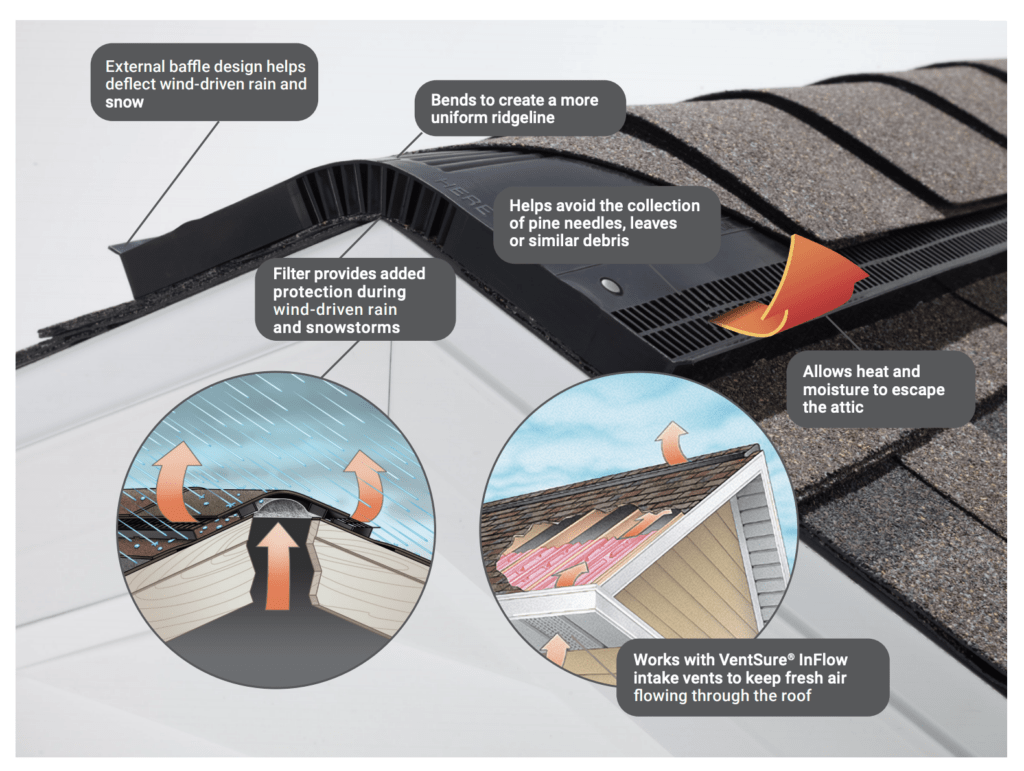At Integrity Roofing, we believe that the roof is a very important part to a home as it protects us from outside forces. As part of the roof system, the shingles and underlayment limit the impacts of weather and exterior elements on the structure. Similar to having a protective seal to prohibit something from penetrating the desired object, shingles and underlayment mimic that protective membrane, though they require ventilation. Without the necessary ventilation, many problems can arise, even reducing the lifespan of the shingles.
Why ventilate?
The main purpose of roof ventilation is to control moisture through an attic, ensuring the space is the desired temperature throughout the seasons. For example, without proper ventilation in the summer, poor airflow can produce excessive heat in the attic. The buildup of heat can create attic temperatures as high as 140°F on a 90°F day. Eventually, this heat moves into the living spaces causing any form of cooling system to work harder and waste more energy to maintain proper temperature.
Another example is in the winter. By having insufficient ventilation, it allows for ice dams to form at the eaves. Ice dams cause roof runoff to backup behind the ice dam and seep underneath shingles and fascia boards. Once this moisture enters the home, several problems can occur. They can range anywhere from, damage to interior/exterior walls to peeling paint and cracked ceilings.
How does ventilation work?

Correctly ventilating a home requires a measured balance of air intake and exhaust to move air throughout the structure. To establish a steady, high volume airflow, ventilation system components must be properly sized and installed. Natural or mechanical features can provide sufficient airflow.
Air intake vents promote the cool air outside to move into attic spaces The three most common types of air intake vents are eave, individual soffit, and continuous soffit vents.
On the opposite side of the spectrum, exhaust vents cause outside air to move through the attic. These vents assist warm air in exiting attic. Exhaust vents are placed above intake vents, often near or at the roof ridge, to allow natural convection to occur.
Not sure if your roof is ventilated properly? Do you feel your house in not energy saving? Let us take a look!
